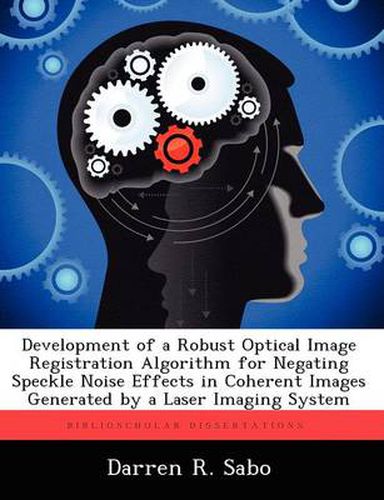Readings Newsletter
Become a Readings Member to make your shopping experience even easier.
Sign in or sign up for free!
You’re not far away from qualifying for FREE standard shipping within Australia
You’ve qualified for FREE standard shipping within Australia
The cart is loading…






This title is printed to order. This book may have been self-published. If so, we cannot guarantee the quality of the content. In the main most books will have gone through the editing process however some may not. We therefore suggest that you be aware of this before ordering this book. If in doubt check either the author or publisher’s details as we are unable to accept any returns unless they are faulty. Please contact us if you have any questions.
The Air Force Research Laboratory (AFRL) Sensors Directorate has constructed and tested a coherent LIght Detection And Ranging (LIDAR) imaging system called Laservision. Registration of individual images remains a significant problem in the generation of useful images collected using coherent imaging systems. Coherent images typically contain significant speckle noise created by the coherency of the laser. Each image collected by the system must be properly registered to allow for averaging the images to produce a single image with adequate resolution to allow detection and identification algorithms to operate accurately or for system operators to perform target detection and identification within a scene. An investigation of the performance of a new image registration algorithm designed using laser speckle noise statistics is conducted on data collected from the Laservision system. This thesis documents the design and performance of the proposed technique compared to that of a standard cross-correlation algorithm. Based on using only speckle noise statistics, the simulated data test results indicate that there is a small range of low average signal-to-noise ratios (SNR) where there is the potential to improve the shift estimation error by 0.1 to 0.16 pixel.
$9.00 standard shipping within Australia
FREE standard shipping within Australia for orders over $100.00
Express & International shipping calculated at checkout
This title is printed to order. This book may have been self-published. If so, we cannot guarantee the quality of the content. In the main most books will have gone through the editing process however some may not. We therefore suggest that you be aware of this before ordering this book. If in doubt check either the author or publisher’s details as we are unable to accept any returns unless they are faulty. Please contact us if you have any questions.
The Air Force Research Laboratory (AFRL) Sensors Directorate has constructed and tested a coherent LIght Detection And Ranging (LIDAR) imaging system called Laservision. Registration of individual images remains a significant problem in the generation of useful images collected using coherent imaging systems. Coherent images typically contain significant speckle noise created by the coherency of the laser. Each image collected by the system must be properly registered to allow for averaging the images to produce a single image with adequate resolution to allow detection and identification algorithms to operate accurately or for system operators to perform target detection and identification within a scene. An investigation of the performance of a new image registration algorithm designed using laser speckle noise statistics is conducted on data collected from the Laservision system. This thesis documents the design and performance of the proposed technique compared to that of a standard cross-correlation algorithm. Based on using only speckle noise statistics, the simulated data test results indicate that there is a small range of low average signal-to-noise ratios (SNR) where there is the potential to improve the shift estimation error by 0.1 to 0.16 pixel.